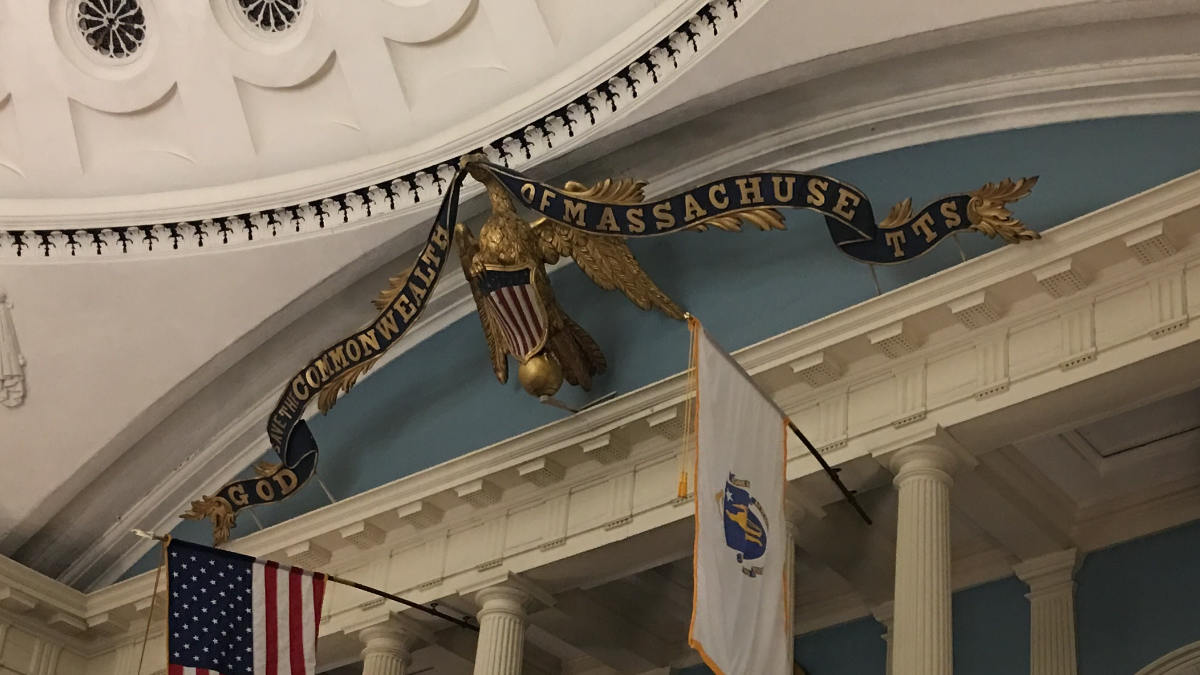Beacon Hill Monument
Monument people may miss near the Massachusetts State House
Walking around the outside of the Massachusetts State House, you may see a column monument with an Eagle on the top, this is the Beacon Hill Monument. There's plenty of history behind this monument.
The Beacon Hill Monument is there to remember an actual beacon that stood on the same spot since April 1635.
Fun Facts about the Beacon Hill Monument
On March 4, 1634, the Massachusetts General Court ordered the beacon to warn Bostonians of impending danger. The court order was for the time period between April 1st and October 1st.
It was placed on this particular site as it was the highest point in the city. At the time, the hill was named Centry Hill.
The area, "Beacon Hill" was named after the Beacon.
The original Beacon, which was basically a boat mast held up by board on the base, was there from 1635 to 1789. (It was taken down between 1775 and 1776.)
In 1789, a storm blew down the Beacon. Instead of replacing the beacon, local residents favorited putting a more permanent monument.
Charles Bulfinch created a plain Doric column monument with an eagle on top. The column was 60-feet in height built with brick and covered with stucco. There was a large wooden eagle at the top. There were four tablets. Two of the tablets were inscribed with important events in the history of the Revolutionary war.
The tablets were authored by Honorable Thomas Dawes, who was a Supreme Court judge in Boston.
By 1810 Boston was in a deep recession and they sold the land where the monument was on to Samuel Spean and John Hancock. The "Old Beacon Hill Monument" was taken down by Atherton Haugh Steven on July 9, 1811. The surrounding hill was dug up.
The wooden effigy of the eagle is over the President chair in the Senate Chamber. The tablets were stored in the State House.
In 1865, the Massachusetts legislature authorized the Beacon Hill monument to be rebuilt. It was dedicated on June 17, 1899. The monument is exactly the same as the 1810 version, and the tablets were put back on the monument.

Wooden Eagle in the Senate Chamber.
Tablets Texts
Stamp Act passed 17 repealed 1766
Board of customs established 1767
British troops fired on the inhabitants of Boston
March 5, 1770
Tea Act Passed 1773
Tea defrayed in Boston December 16
Port of Boston shut and guarded June 1, 1774
General Congress at Philadephila
Provinvial Congreffs of Concord
Battle of Lexington April 19, 1775
Battle of Bunker Hill June 1775
Washington took command of the army July
Boston evacuated March 17, 1776
Independance declared by Congress July 4, 1776
Hancock President
Capture of Heffians at Trenton Dec: 26, 1776
Capture of Heffians at Bennington Aug: 16, 1777
Capture of British Army at Saratoga Oct: 17
Alliance with France Feb 6, 1778
Confederation of United States formed July 9
Consitution of Massachusetts formed 1780
Bowdeoin Presiden of Convention
Capture of British Army at York Cot 19, 1781
Parlimenaries of Peace Nov, 30 1782
Definitive Treaty of Peace Selt 10, 1783
Federal Consitution formed Sept 17, 1787
and ratified by the United States 1787 to 1790
New Congress assembled at New York April 6, 1789
Washington inaugurated President April 30.
Public debts funded Aug 4, 1790
In 1634 The General Court Caused a Beacon To be placed on the top of this hill
In 1730 A Brick and Stone Monument
Designed by Charles Bulfinch
Replaced the Beacon
But was removed in 1811
When the hill was cut down
It is now reproduced in stone
by the Bunker Hill Monument Association 1898
